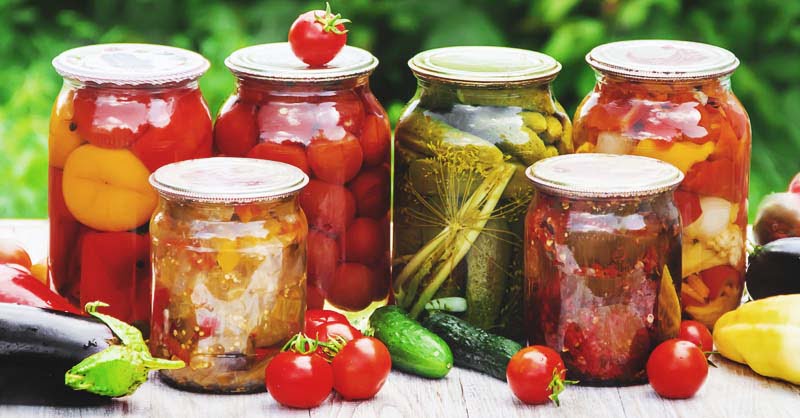Embark on a fermentation adventure and harness the power of probiotics. Learn the science behind transforming ingredients into tangy sauerkrauts, kimchi, and other gut-friendly delights.
Culinary Alchemy: DIY Fermentation for Probiotic Riches
Fermentation is a natural process that has been used for centuries to preserve food and create delicious and nutritious dishes. In recent years, there has been a growing interest in the health benefits of fermented foods, which are rich in probiotics. Probiotics are live microorganisms that are similar to the good bacteria that naturally live in our gut. They can help to improve gut health, boost the immune system, and protect against disease.
There are many different ways to ferment food, but some of the most popular methods include:
- Lacto-fermentation: This is the process of fermenting foods with lactic acid bacteria. This type of fermentation is used to make sauerkraut, kimchi, pickles, and yogurt.
Lecto-fermentation is a relatively simple process that can be done at home. Here are the basic steps:
- Choose your vegetables. Any type of vegetable can be used for lecto-fermentation, but some of the most popular choices include cabbage, carrots, cucumbers, and onions.
- Wash your vegetables thoroughly. It is important to remove any dirt or debris from the vegetables before fermenting them.
- Cut your vegetables into thin strips. The smaller the pieces, the faster the fermentation process will take.
- Add salt to your vegetables. The amount of salt you use will depend on the type of vegetables you are using and your personal preferences. A good starting point is 1 tablespoon of salt per pound of vegetables.
- Pack your vegetables into a jar or container. Make sure to leave some space at the top of the jar so that the vegetables can ferment without overflowing.
- Weigh down the vegetables. This will help to keep them submerged in the liquid. You can use a piece of cabbage leaf, a small plate, or a fermentation weight.
- Cover the jar or container with a lid. You can use a regular lid or a fermentation lid with an airlock.
- Ferment your vegetables in a cool, dark place. The fermentation process will take anywhere from a few days to a few weeks, depending on the type of vegetables you are using and the temperature of your fermentation space.
- Once the fermentation is complete, store your vegetables in the refrigerator. They will keep for several months.
Lecto-fermentation is a great way to preserve vegetables and add probiotic bacteria to your diet. It is a simple process that can be done at home, and the results are delicious and nutritious.
- Anaerobic fermentation: This is the process of fermenting foods without oxygen. This type of fermentation is used to make wine, beer, and cider.
Anaerobic fermentation is a type of fermentation that occurs in the absence of oxygen. This type of fermentation is often used to make wine, beer, and cider. It can also be used to make sauerkraut, kimchi, and other fermented vegetables.
To ferment food anaerobically at home, you will need the following:
- A food-grade container with a lid
- A weight to keep the food submerged
- Salt
- Your choice of food
The specific steps for anaerobic fermentation will vary depending on the type of food you are fermenting. However, the general steps are as follows:
- Wash your food thoroughly.
- Cut your food into small pieces.
- Add salt to your food. The amount of salt you use will depend on the type of food you are fermenting. A good starting point is 2 teaspoons of salt per pound of food.
- Pack your food into the container. Make sure to leave some space at the top of the container so that the food can ferment without overflowing.
- Weigh down the food. This will help to keep it submerged in the liquid. You can use a piece of cabbage leaf, a small plate, or a fermentation weight.
- Cover the container with a lid.
- Ferment your food in a cool, dark place. The fermentation process will take anywhere from a few days to a few weeks, depending on the type of food you are fermenting.
- Once the fermentation is complete, store your food in the refrigerator. It will keep for several months.
- Fermentation with yeast: This type of fermentation is used to make bread, sourdough, and tempeh.
Fermentation with yeast is a process where yeast converts carbohydrates into alcohol and carbon dioxide. This process is used to make bread, beer, wine, and other fermented foods.
To ferment food with yeast at home, you will need the following:
- Yeast: You can use active dry yeast, instant yeast, or sourdough starter.
- Sugar: The amount of sugar you use will depend on the type of food you are fermenting. A good starting point is 1 tablespoon of sugar per cup of flour.
- Warm water: The water should be warm, but not hot. The ideal temperature is between 100 and 110 degrees Fahrenheit.
- Your choice of food: You can ferment any food that contains carbohydrates, such as bread dough, fruit, vegetables, and grains.
The specific steps for fermenting food with yeast will vary depending on the type of food you are fermenting. However, the general steps are as follows:
- Mix the yeast and sugar with warm water in a bowl.
- Let the mixture sit for 5-10 minutes, or until the yeast is foamy.
- Add the yeast mixture to the food you are fermenting.
- Stir to combine.
- Cover the food and let it ferment in a warm place. The fermentation process will take anywhere from a few hours to a few days, depending on the type of food you are fermenting.
- Once the fermentation is complete, store your food in the refrigerator. It will keep for several days.
Here are some additional tips for fermentation with yeast:
- Use fresh yeast. Expired yeast may not be as effective.
- Do not use hot water. Hot water will kill the yeast.
- Be sure to cover the food. This will help to prevent the growth of mold.
- If you are fermenting bread dough, punch it down every 30 minutes or so. This will help to release the carbon dioxide and prevent the dough from becoming too hard.
- If you are fermenting fruit, be sure to remove any bruised or moldy pieces.
With a little care and attention, you can easily make delicious and nutritious fermented foods at home using yeast.
Fermenting food at home is a great way to get the health benefits of probiotics and enjoy delicious and nutritious dishes. Here are a few tips for fermenting food at home:
- Use high-quality ingredients. The quality of the ingredients you use will make a big difference in the taste and quality of your fermented food.
- Be clean. It is important to be clean when fermenting food to avoid contamination. Wash all of your equipment and utensils thoroughly before use.
- Use the right amount of salt. Salt helps to preserve food and create a favorable environment for the growth of beneficial bacteria.
- Be patient. Fermentation takes time. Don’t be tempted to rush the process.
If you are new to fermenting food, there are many resources available to help you get started. There are books, websites, and even workshops that can teach you the basics of fermentation.
Fermentation is a culinary alchemy that can transform ordinary ingredients into delicious and nutritious dishes that are also good for your health. So what are you waiting for? Start fermenting today!
Additional Benefits
Here are some additional benefits of fermented foods:
- They can help to improve digestion.
- They can boost the immune system.
- They can help to protect against cancer.
- They can help to reduce inflammation.
- They can improve mental health.
- They can help to promote weight loss.
If you are looking for a way to improve your health and enjoy delicious and nutritious food, then fermenting food is a great option. So get started today and discover the culinary alchemy of fermentation!

